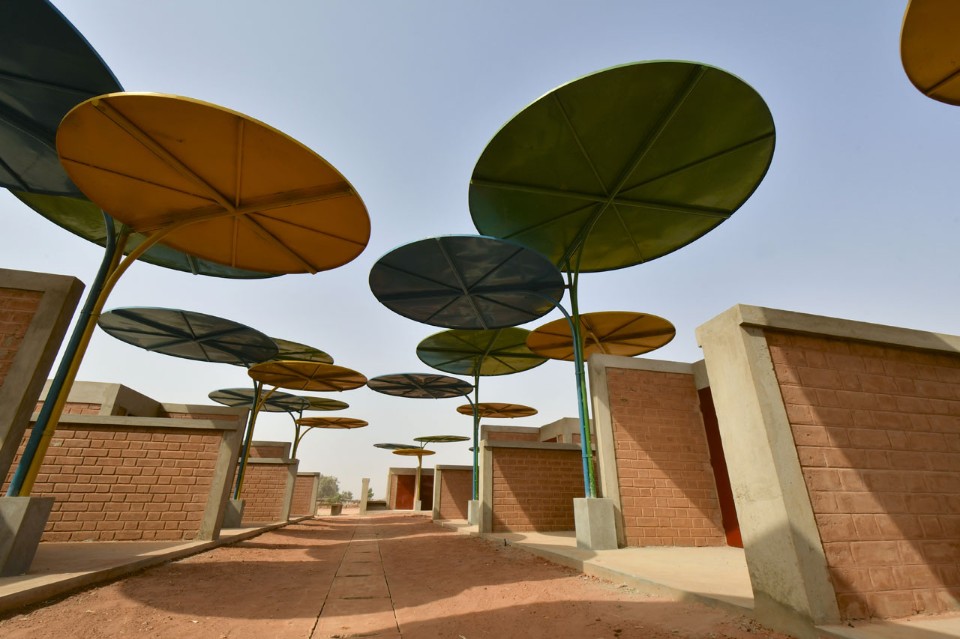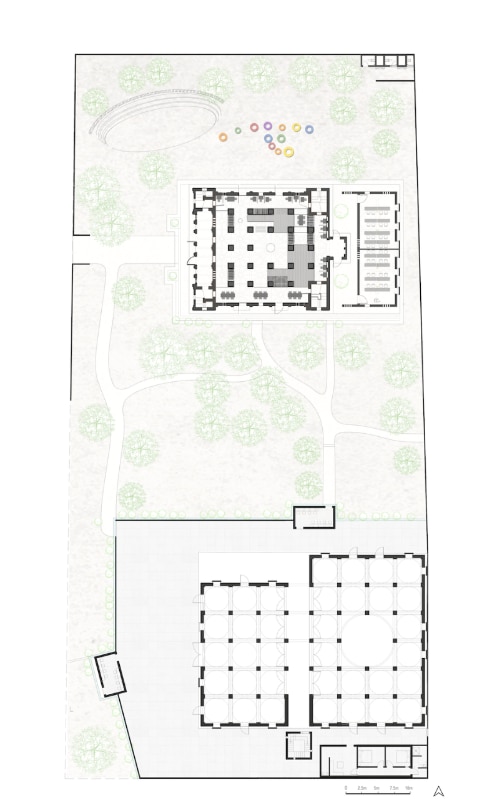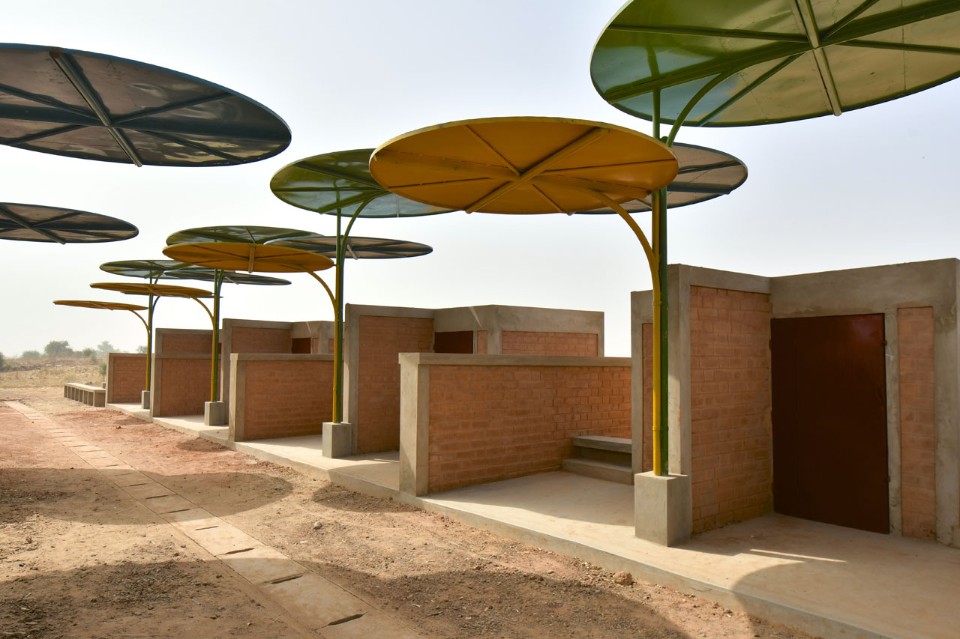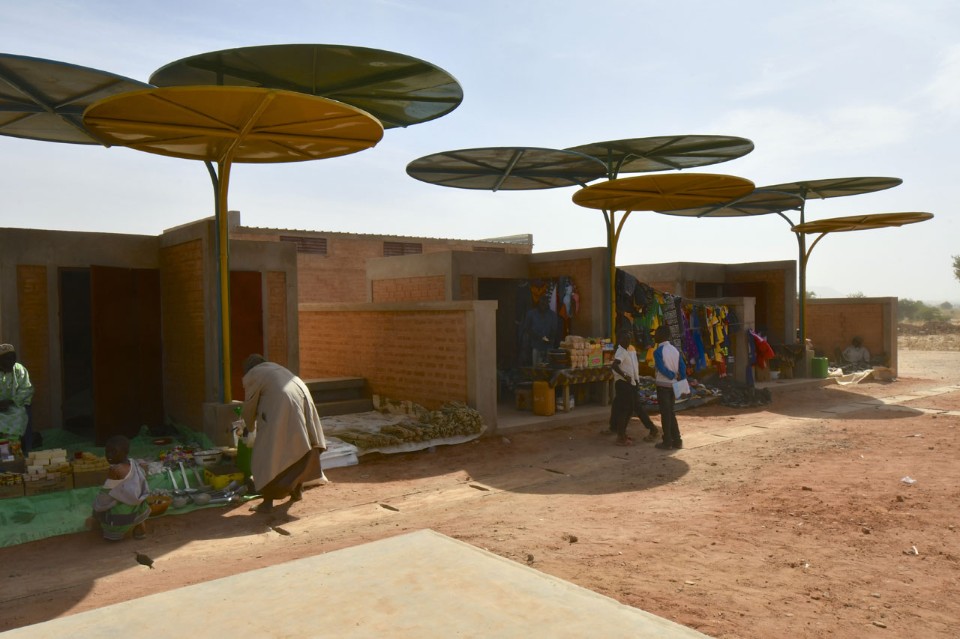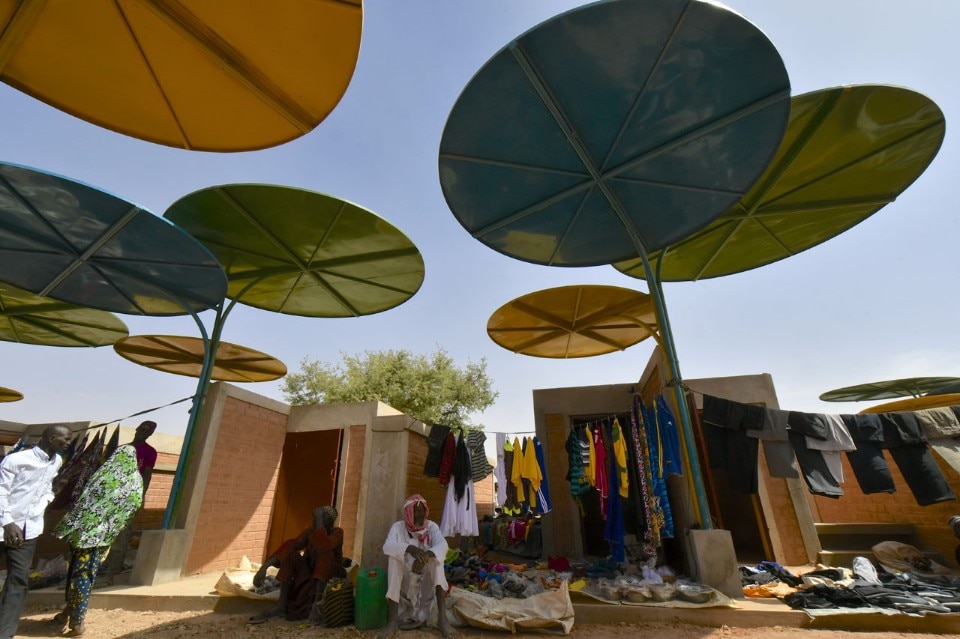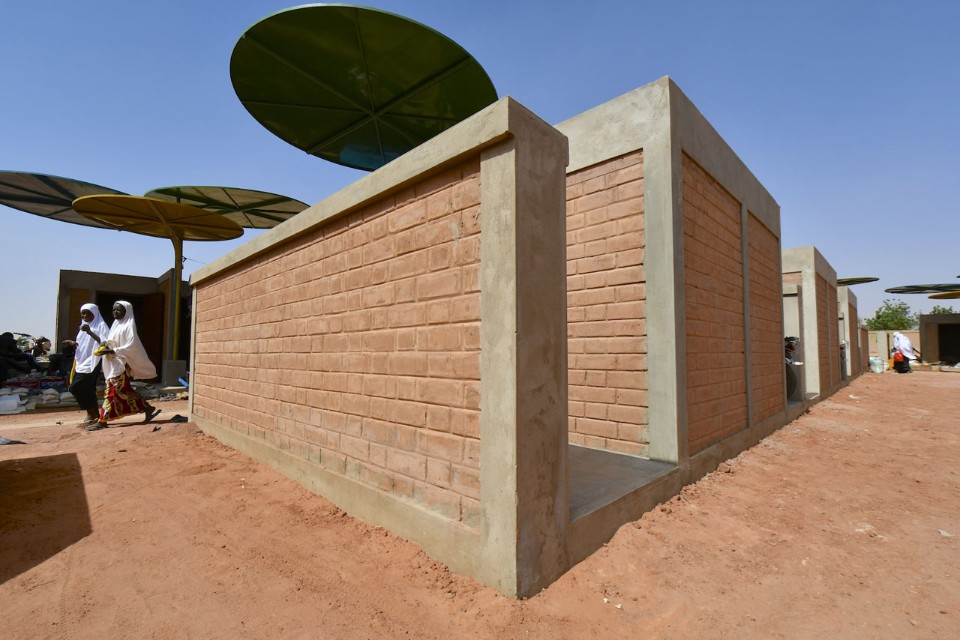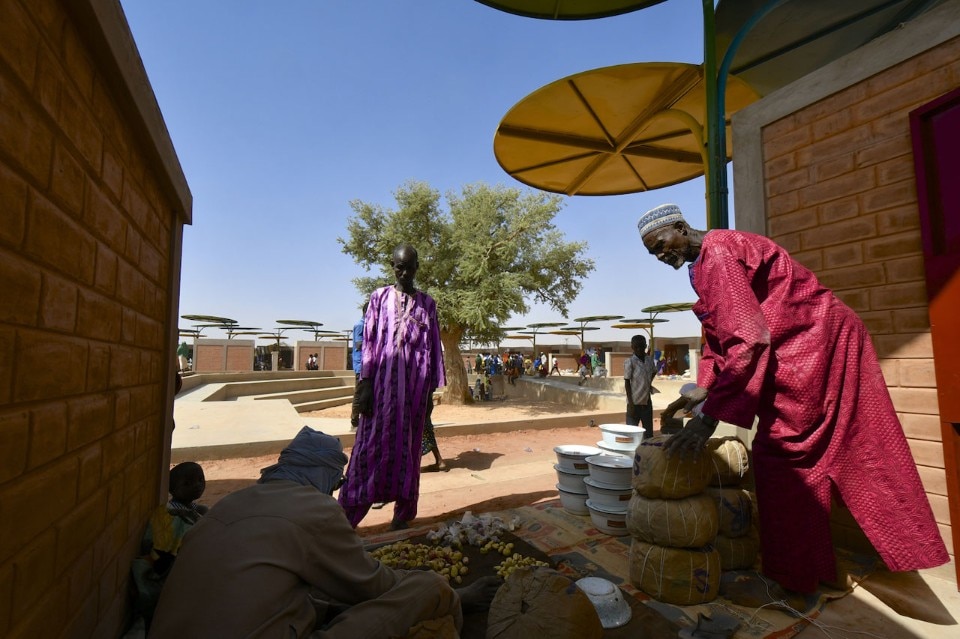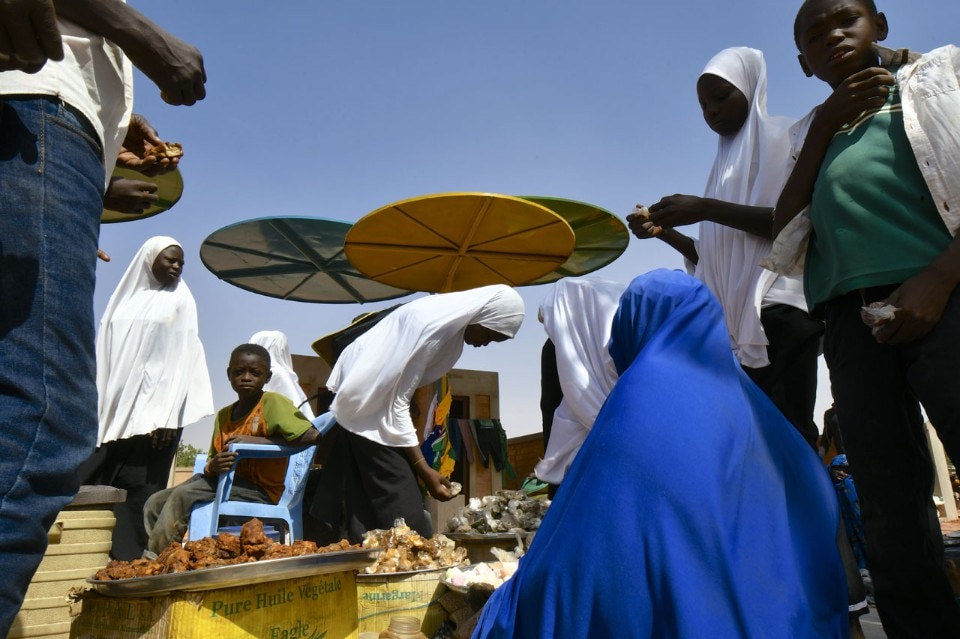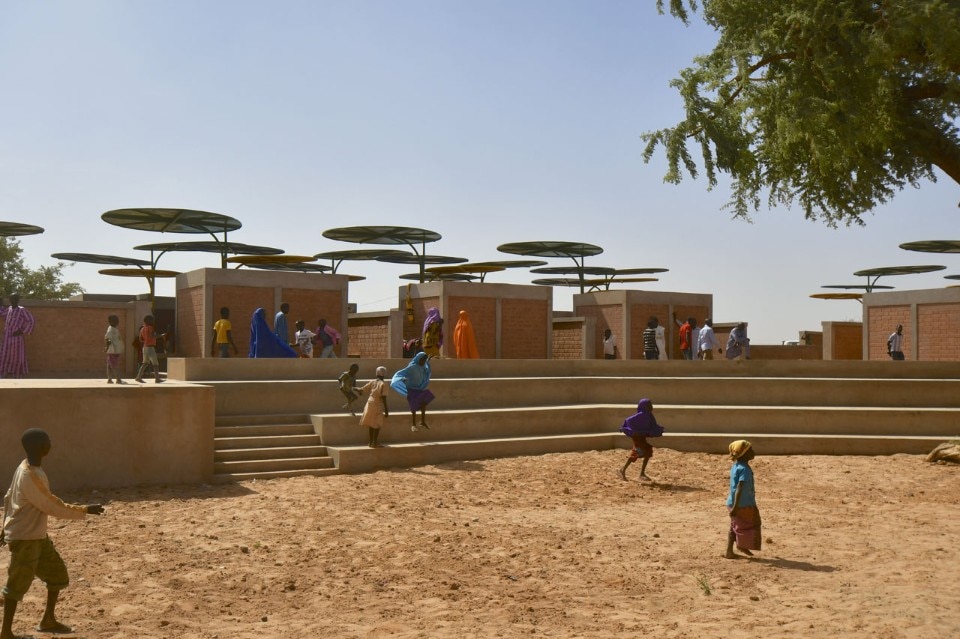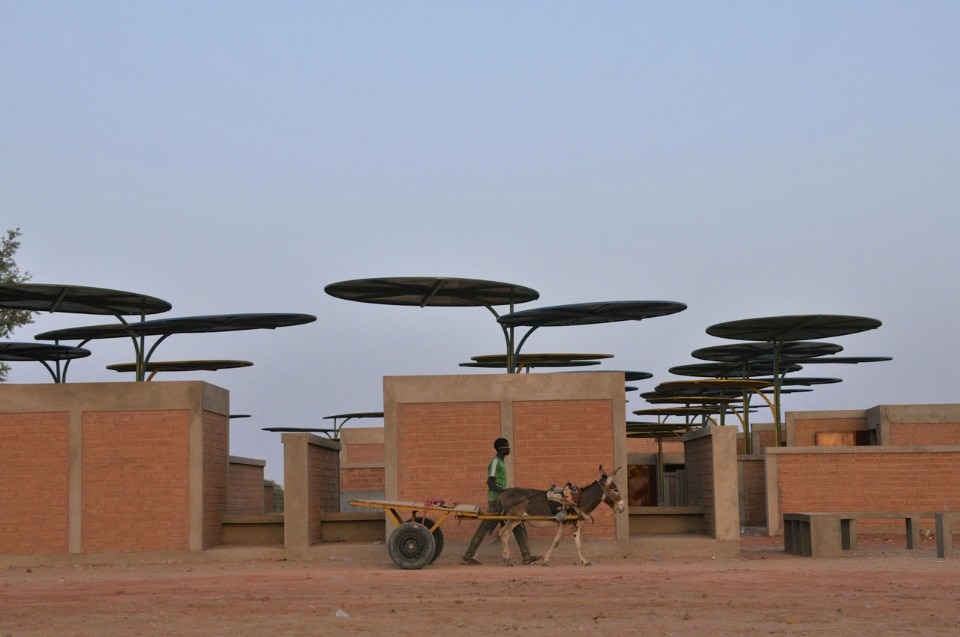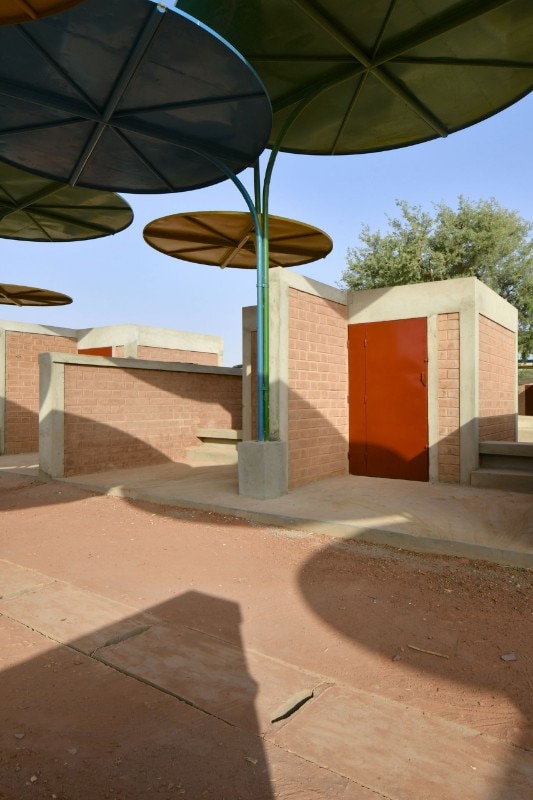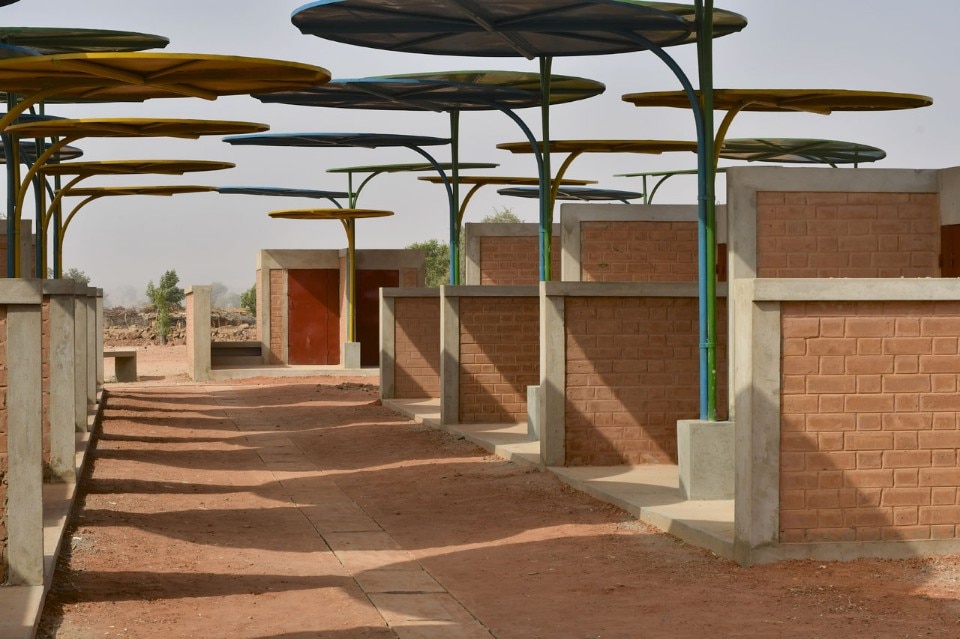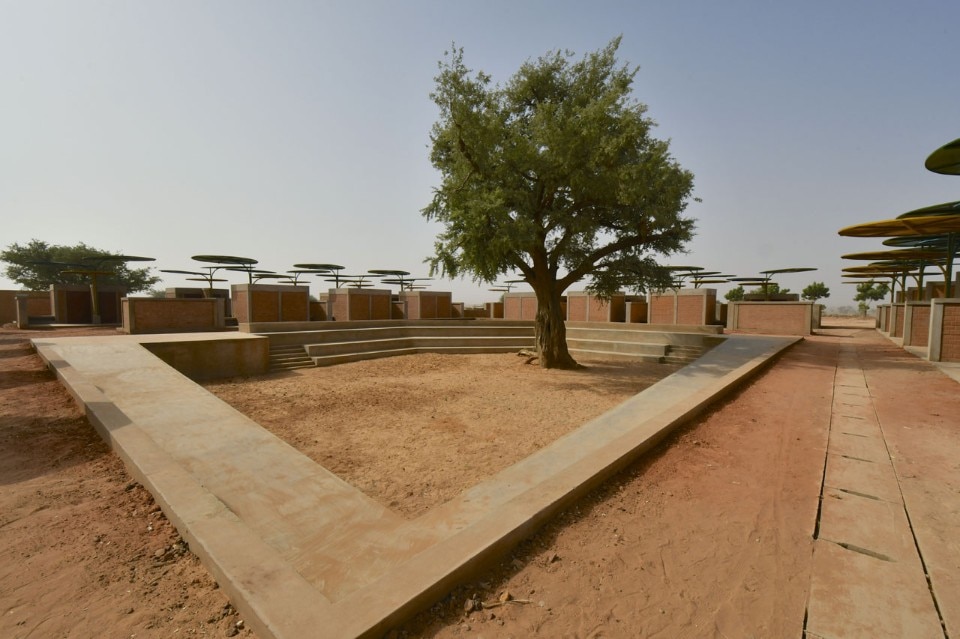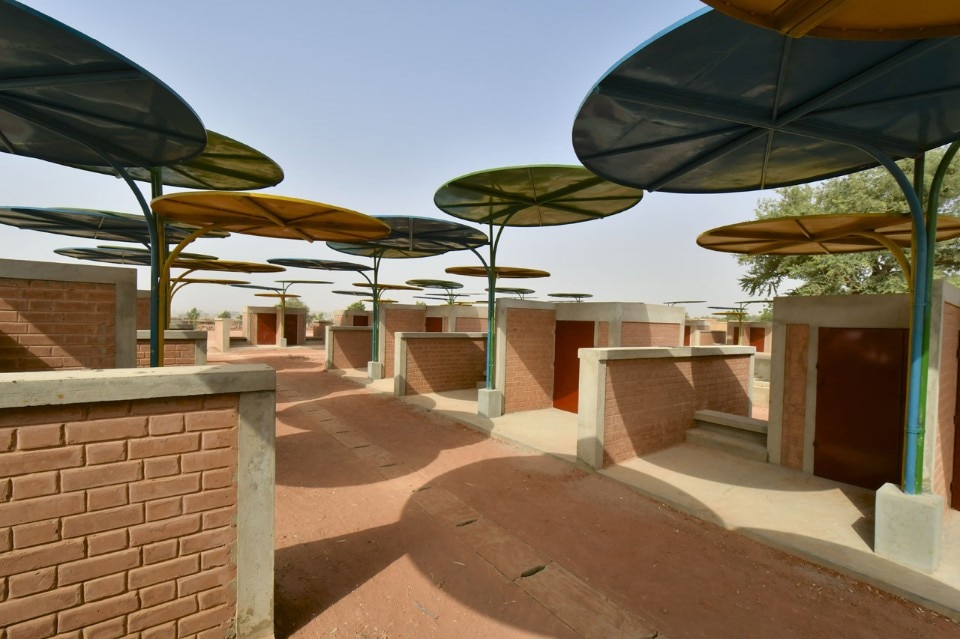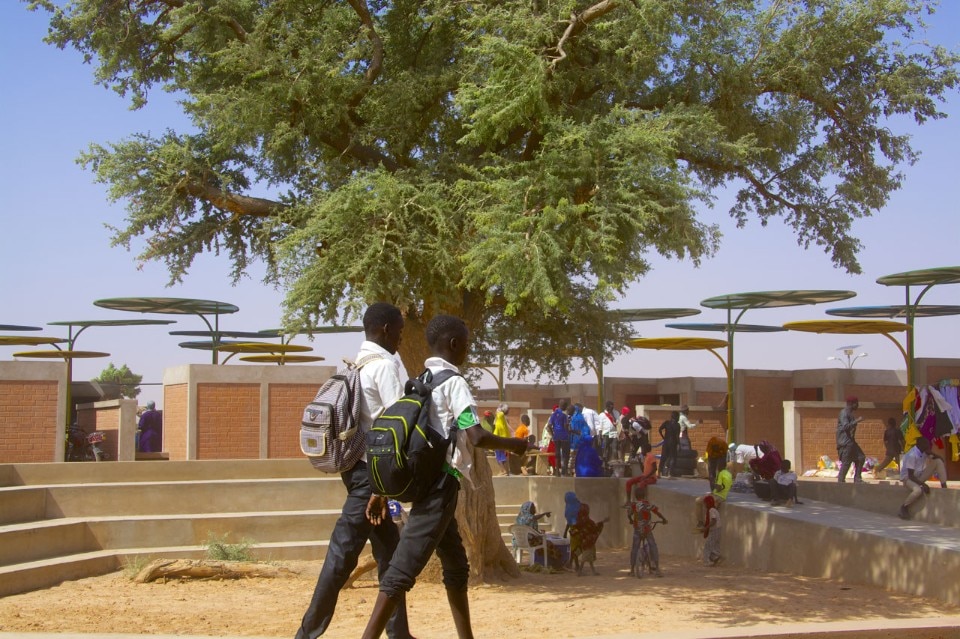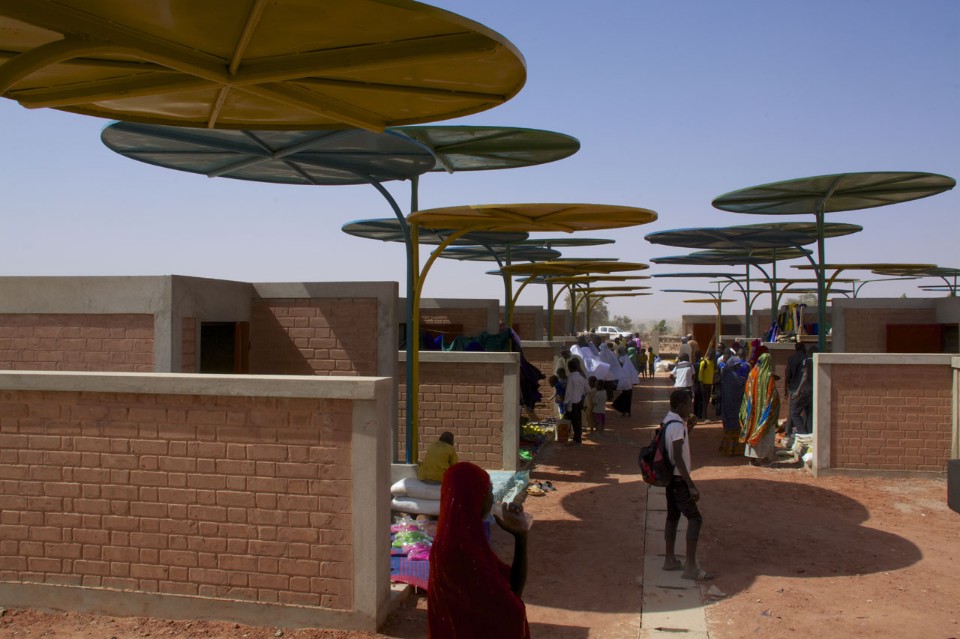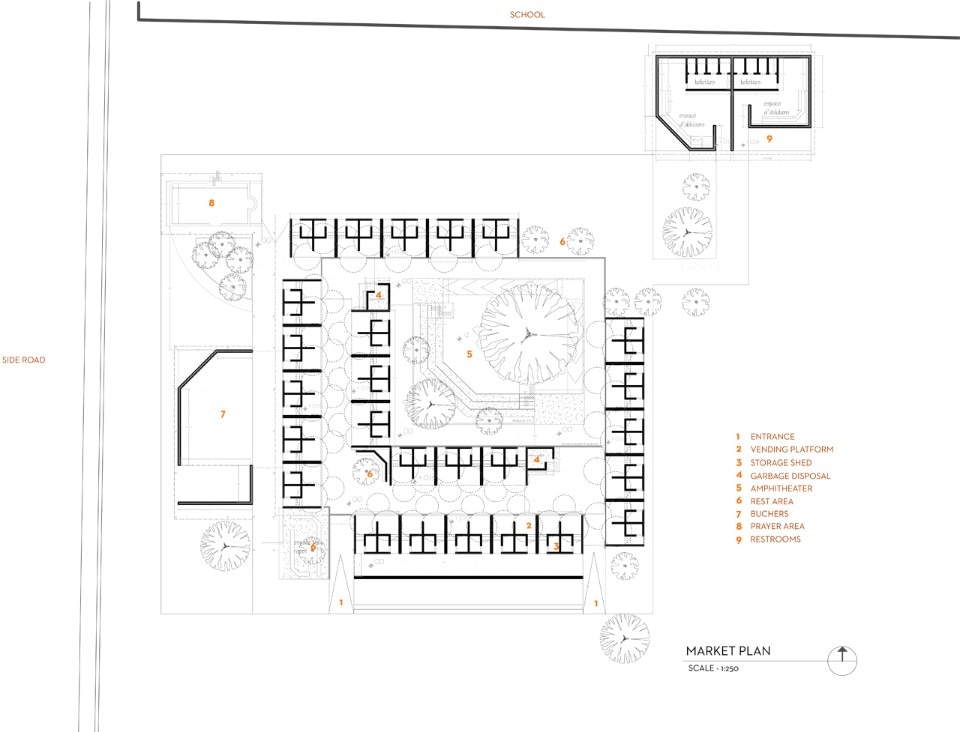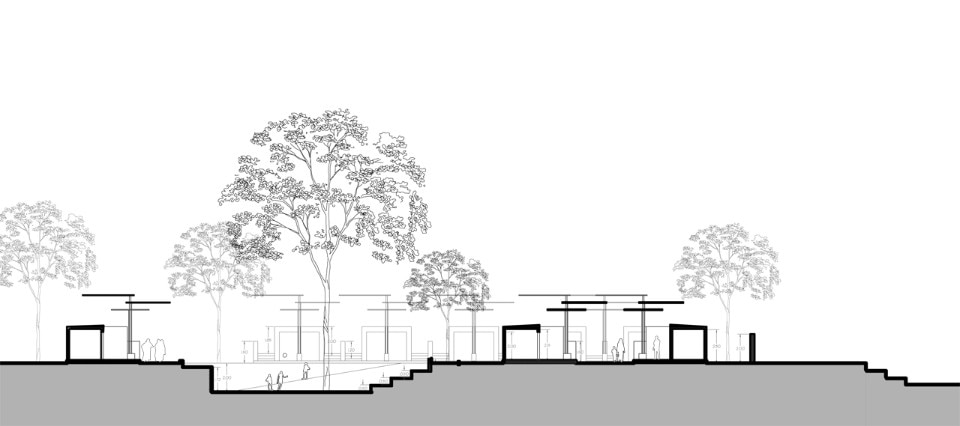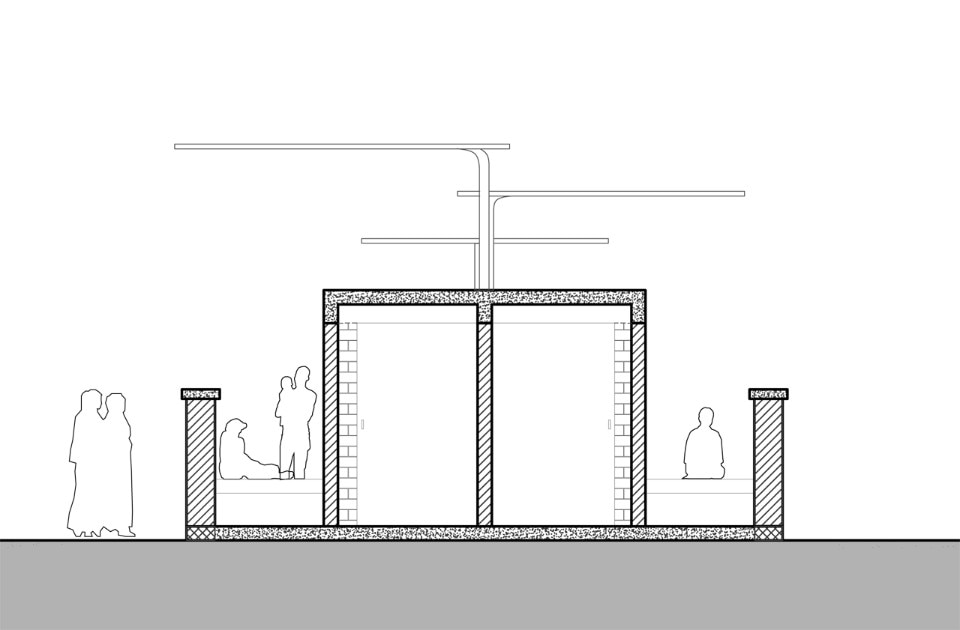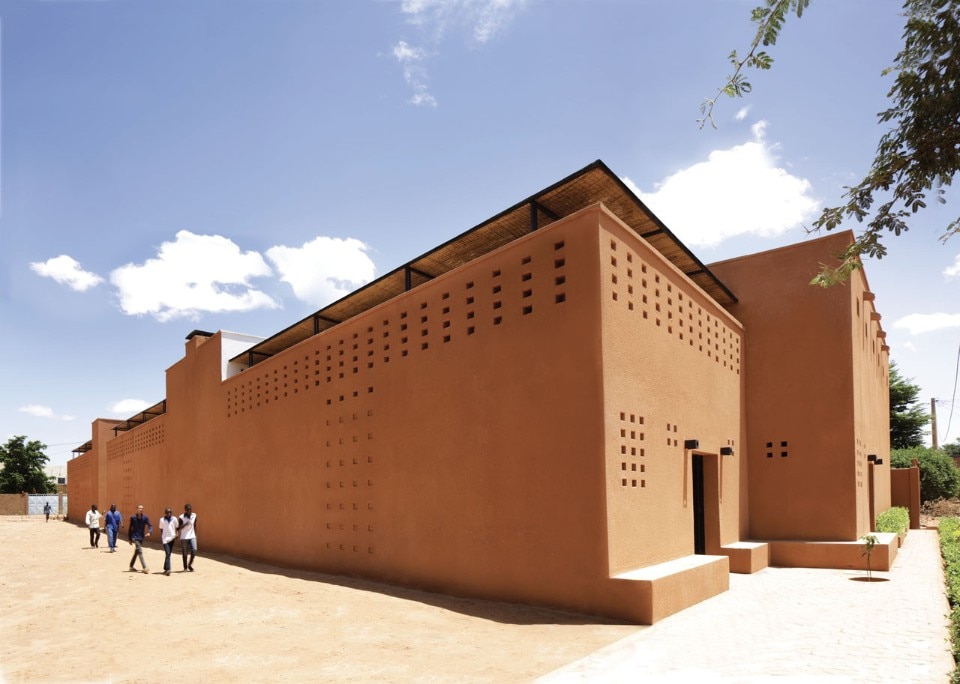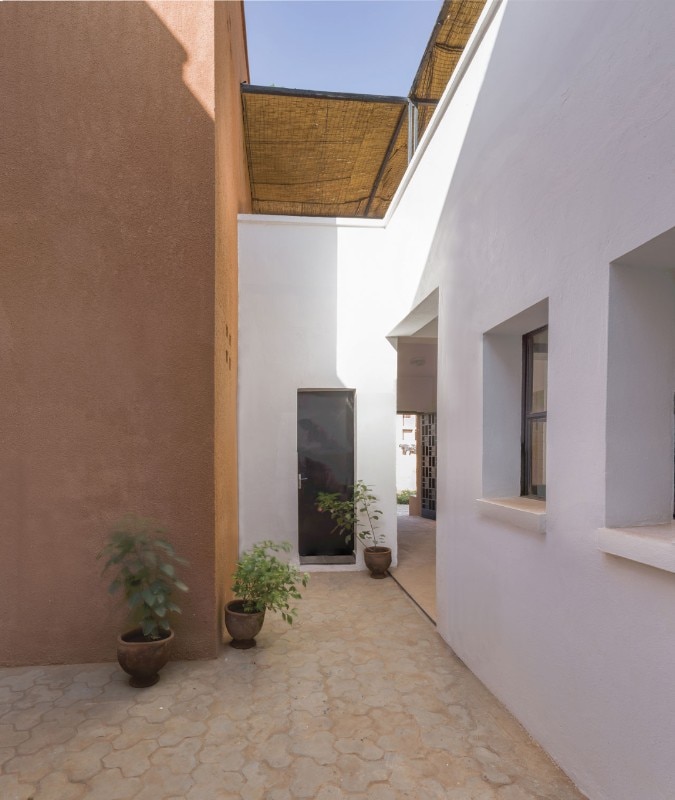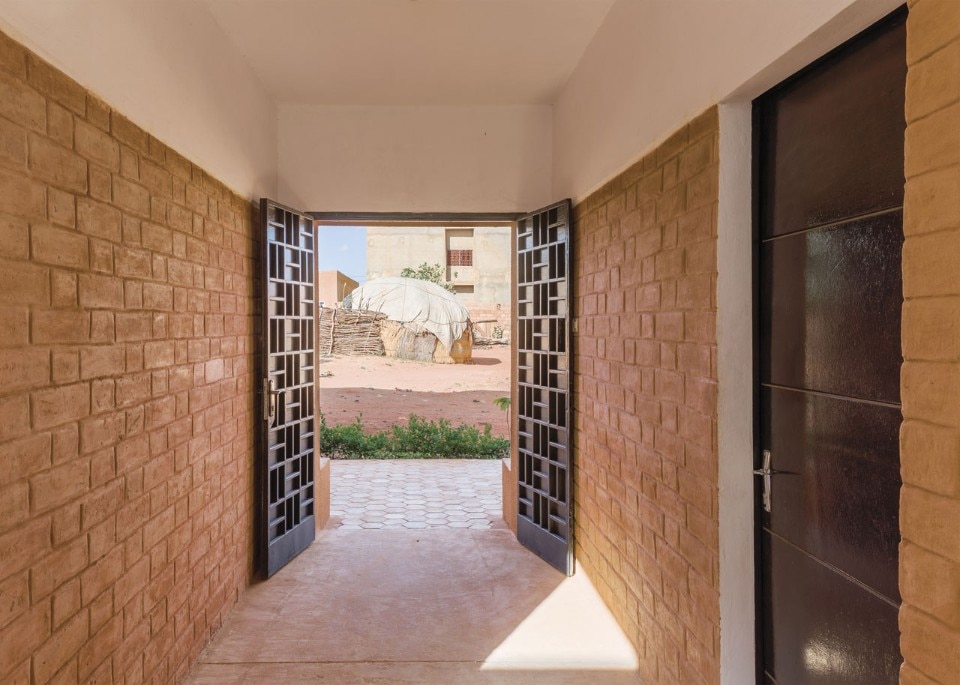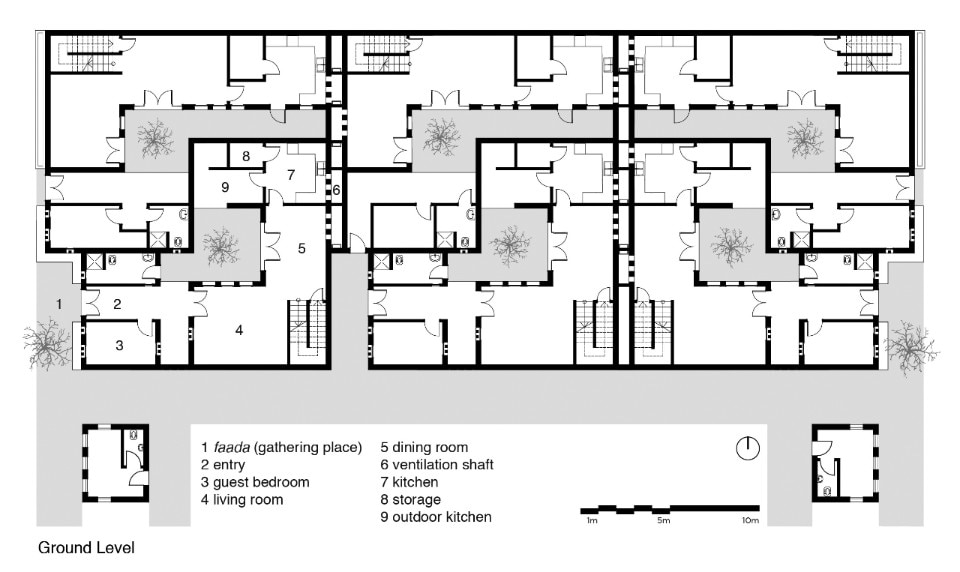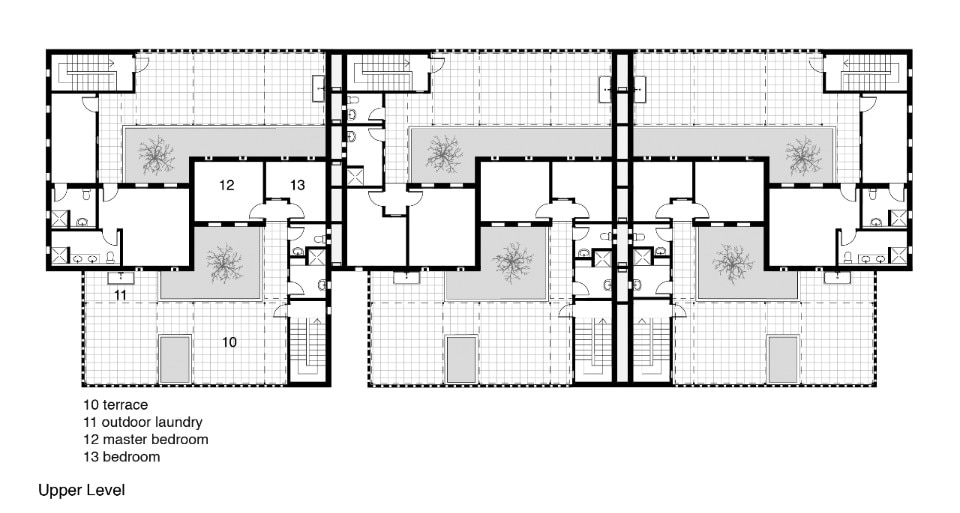Raised in Niger and trained as a software developer, Mariam Kamara opened her architecture studio Atelier Masōmī in 2014. Her projects give a contribution “beyond architecture”, in a socially empowering act that have the power to elevate, dignify and provide a better quality of life. Known for interventions such as Niamey 2000, the Hikma religious and secular complex and the recently-completed Regional Market in Dandaji, Niger (published on Domus 1036, June issue 2019), her studio revolves around material experimentation, mixing ancient techniques and new technology, with few loyal contractors that truly understand the nature of each project.
“Our studio is a place to explore, with less drawings and more models”, she explains. “Our contractors and artisans are all friends: we are all part of the same team. We actually invest so much in them, in terms of training. Whenever we do a project and there is a lack of skills, they train on that specific skill, making sure that they learn everything they need. Now we can’t do anything without them.”
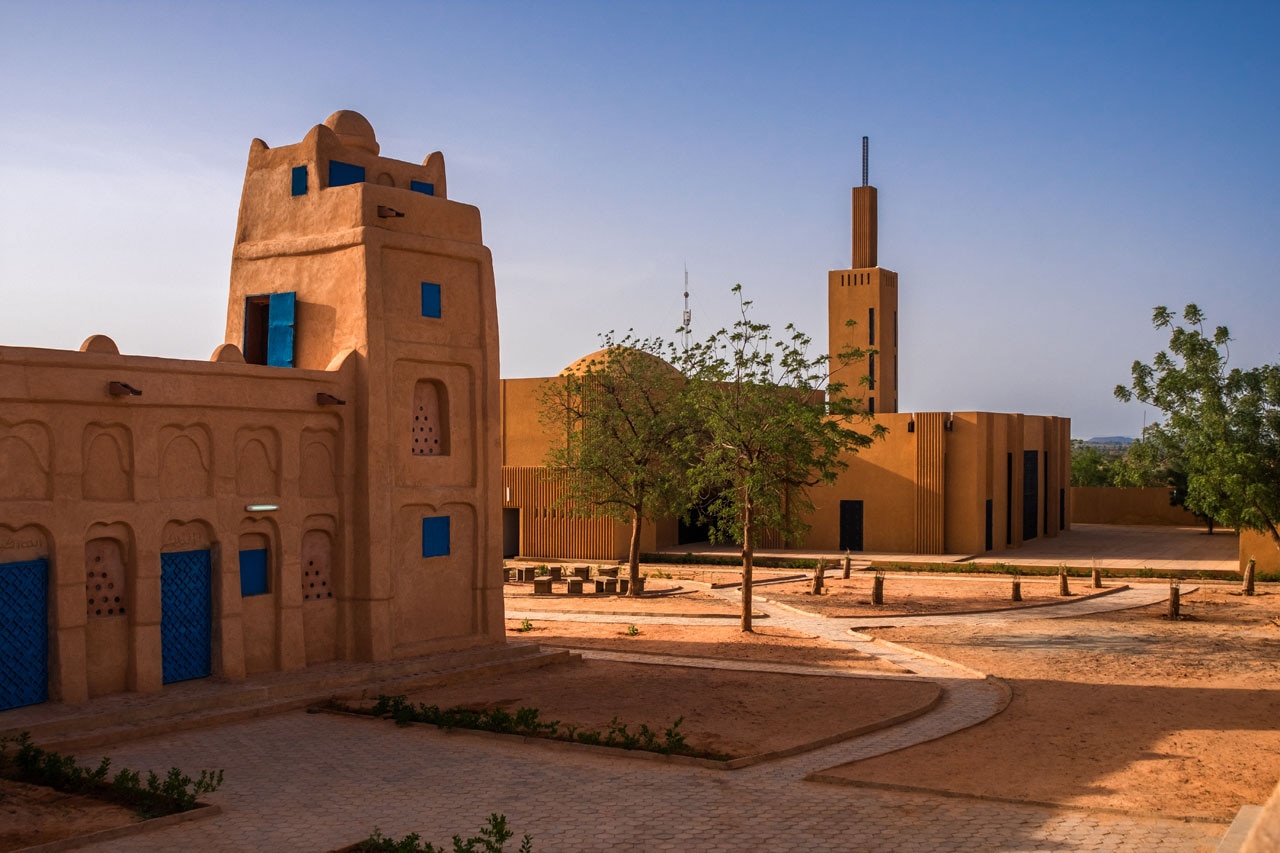
 View gallery
View gallery
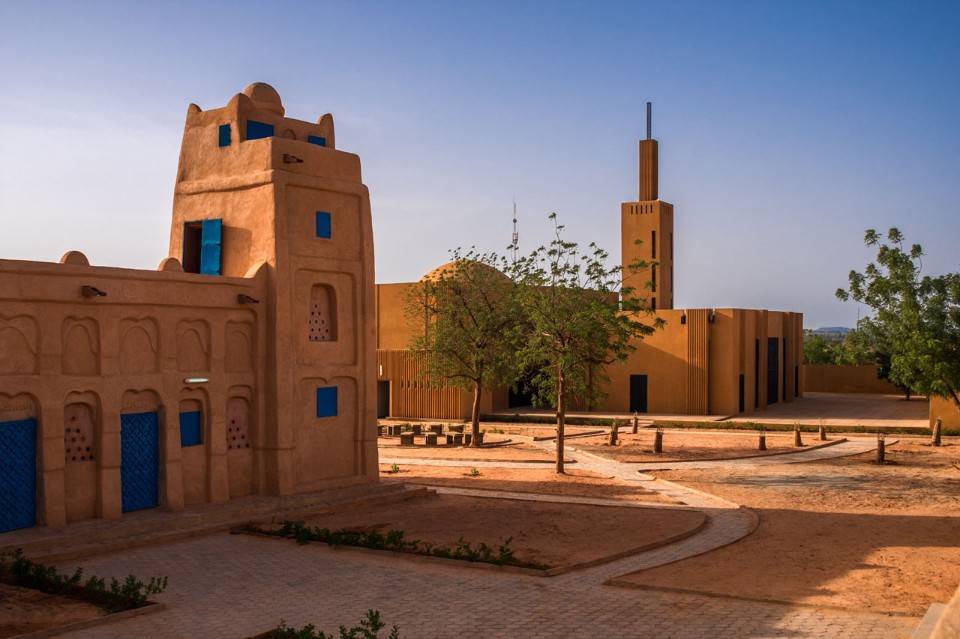
Mariam Kamara, Atelier Masōmī and Studio Chahar, Hikma religious and secular complex, Dandaji, Niger, 2018
Photo James Wang
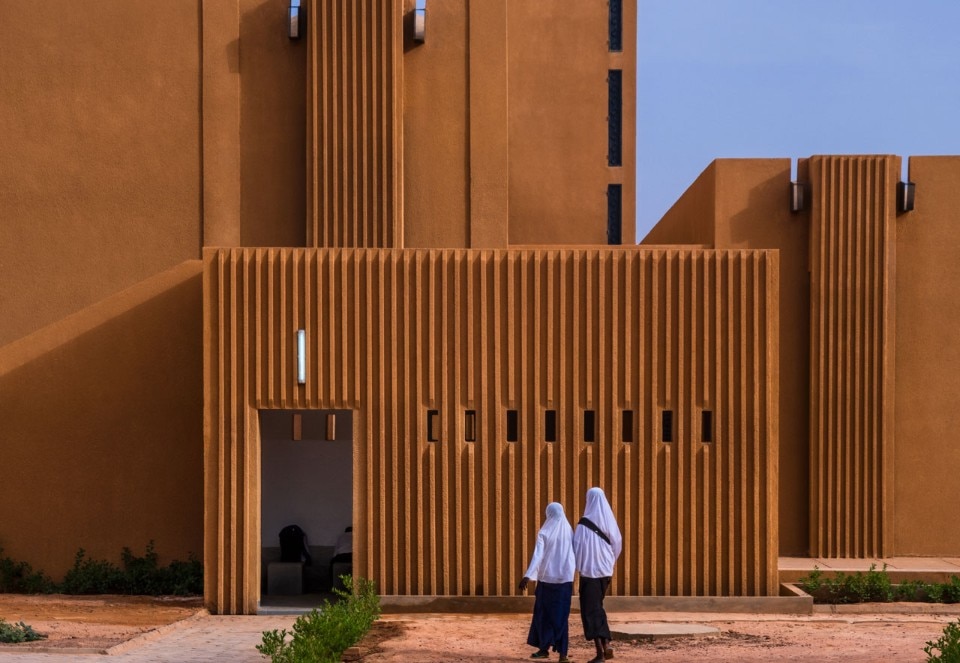
Mariam Kamara, Atelier Masōmī and Studio Chahar, Hikma religious and secular complex, Dandaji, Niger, 2018
Photo James Wang

Mariam Kamara, Atelier Masōmī and Studio Chahar, Hikma religious and secular complex, Dandaji, Niger, 2018
Photo James Wang
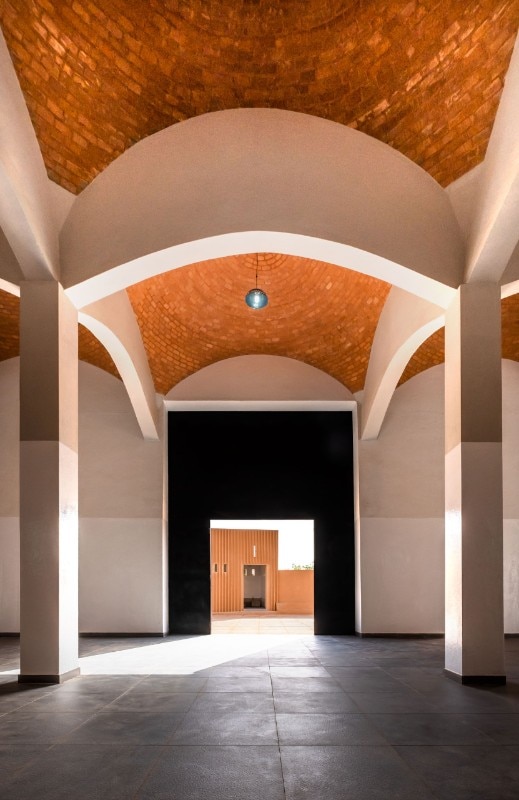
Mariam Kamara, Atelier Masōmī and Studio Chahar, Hikma religious and secular complex, Dandaji, Niger, 2018
Photo James Wang
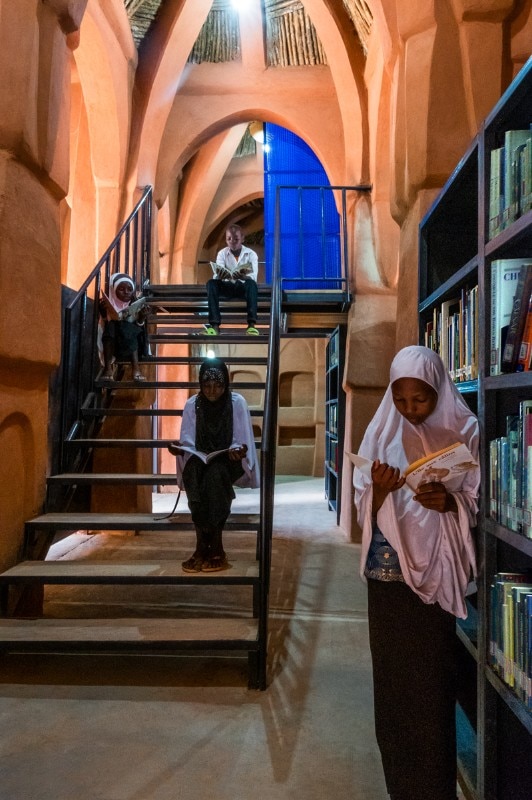
Mariam Kamara, Atelier Masōmī and Studio Chahar, Hikma religious and secular complex, Dandaji, Niger, 2018
Photo James Wang
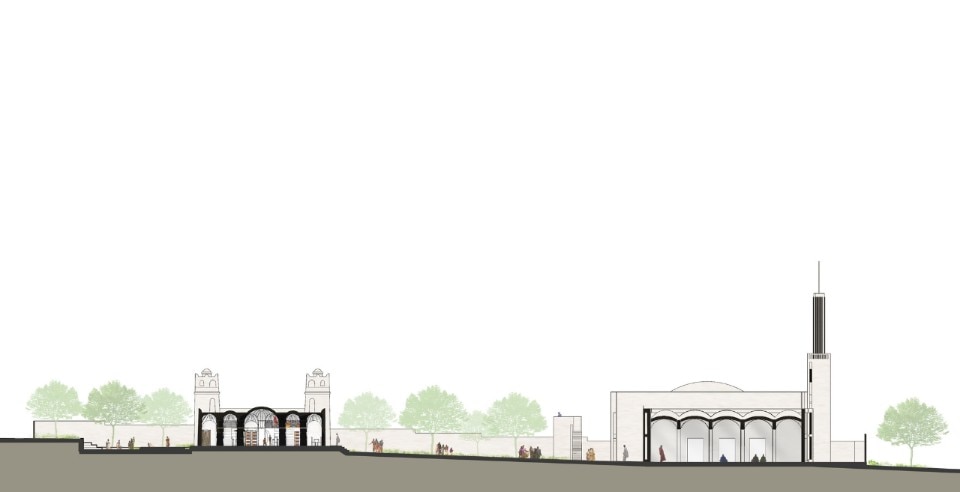
Mariam Kamara, Atelier Masōmī and Studio Chahar, Hikma religious and secular complex, Dandaji, Niger, 2018
Section

Mariam Kamara, Atelier Masōmī and Studio Chahar, Hikma religious and secular complex, Dandaji, Niger, 2018
Photo James Wang

Mariam Kamara, Atelier Masōmī and Studio Chahar, Hikma religious and secular complex, Dandaji, Niger, 2018
Photo James Wang

Mariam Kamara, Atelier Masōmī and Studio Chahar, Hikma religious and secular complex, Dandaji, Niger, 2018
Photo James Wang

Mariam Kamara, Atelier Masōmī and Studio Chahar, Hikma religious and secular complex, Dandaji, Niger, 2018
Photo James Wang

Mariam Kamara, Atelier Masōmī and Studio Chahar, Hikma religious and secular complex, Dandaji, Niger, 2018
Photo James Wang

Mariam Kamara, Atelier Masōmī and Studio Chahar, Hikma religious and secular complex, Dandaji, Niger, 2018
Section
What are the challenges and the opportunities working in Niger?
I think there are probably more opportunities than challenges, thankfully. The challenges are real, especially when using a training that you received in the Western world in a place where a lot of the amenities or resources that you need or the resources you may need are not available. So, in a way, you almost have to invent the way you work and adapt your training to the place you are: it takes a little bit of time to develop a process in that system. We are still making sure that you maintain some standards, understanding what you have at your disposal.
How do you see architecture evolving in Niger in the future years?
The local architecture scene is starting to focus a lot more on issues of sustainability and pays more attention to materials, in a really positive direction. So far, we have just systematically applied whatever material we saw elsewhere. Now we are figuring out what we have here, so that’s definitely positive. The future looks quite bright, the country is developing economically and investing in infrastructure – schools and markets – and cultural projects. Today’s free availability of knowledge brings so many sources of inspiration, allowing more architects to emerge. It’s a really exciting time, it feels like the sky is the limit and you can just dream all kinds of things now.
The future looks quite bright, the country is developing economically and investing in infrastructure and cultural projects
How is sustainable architecture evolving in Africa, what is its future?
The word ‘sustainability’ doesn’t sound good anymore because it ended up becoming technology, referring to all these really fancy things, like solar panels and so on, that are not actually sustainable for the rest of the world. They are sustainable only for a little portion of the world and they are incredibly expensive too. I like to think of sustainability in terms of “sustaining people”: by sustaining people you are alike to sustain the environment as well. When you sustain people economically, for example by using local materials, you are also helping the environment, it’s better for the place you live and it’s more affordable.
When we talk about creating a positive environment that is inclusive or doing something from a social point of view, this also creates a certain level attachment: people become more respectful of the environment. We noticed this behaviour in our Regional Market project where on the very first day of opening, everyone gathered trying to make decisions on how it was going to be maintained or cleaned, which is a discussion that never happened before. People were so excited about what they were being given that they were just worried that they kept it spotless, and that was amazing to us. This also helped sustainability in a way. There are many, many ways that are much softer and fuzzier then you think to bring this up. Certainly, in African countries, I don’t think sustainability is something that can be measured in terms of certification.
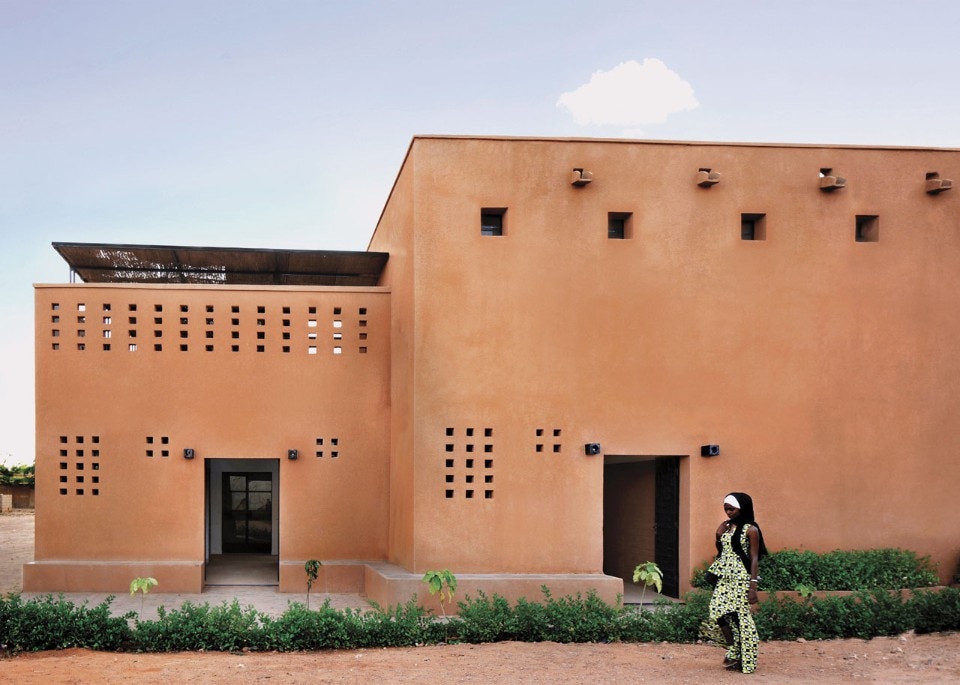
You use local knowledge widely. Local knowledge is disappearing somehow and, with it, centuries of best practices that used ancient skills to deliver excellent building solutions.
Yes it is. Even in terms of durability, you know. The stuff that we make today doesn’t last. 20 years later a building is demolished because we actually make it cheaper. We are not using the knowledge we have that is centuries old. Why do we have to break with the past? We can push it forward. We can add technology to it, we can make it better in terms of resistance, in terms of all kinds of different things, and we can improve on the techniques. But, somehow, we are always trying to break with that completely, which is really difficult to understand, honestly. I don’t associate the value in that.
For me it’s been really important to not only learn from local artisans but to try to really think together and work together and try to figure out what can we do, how to we make things better, how can we improve. Maybe they used to do things in certain ways, at certain scales, and we can explore the scale of what they normally do and it’s so overwarming. By doing this we encounter technical problems and have to come up with a solution that moves that certain skill forward, is that simple and much more interesting.
I like to think of sustainability in terms of “sustaining people”: by sustaining people you are alike to sustain the environment as well
Is there a general interest in Niger regarding this update of traditional techniques through technology?
The concept hasn’t really started yet, I think. But now there is a lot more curiosity. I guess the more projects that are going in that direction, the more aware people will be. Fingers crossed.
Your architecture is very clear, very readable and linked to what you do, in terms of shapes, materials and balance.
I think I’m a very simple person. I don’t like complications. I like things to be clear, to be simple. Overly complicated things are overrated. Personally, I’m rational, and coupled with the fact that the environment I grew up in was very much rational, the architecture of the place is also very rational. Even when there is some decoration, the architecture is soft, simple but elegant and that’s the direction I try to follow, something that has a soul but that is just pretty plain.
Why do we have to break with the past? We can push it forward. We can add technology to it, we can make it better.
Your interiors seem to reflect the soul you’re talking about. What it is the quality that an interior must have?
I think the interior has a lot to do with just simple moods, as when for example we are showcasing the ceilings. But it also deals with manipulation, like manipulating light in a country where light is extremely harsh: the interiors, in order to be soft, can’t really have big windows with all that light coming in. It’s a game of filtering light and creating a certain effect and a certain mood inside. It must feel peaceful. I’m always seeking for a refuge, away from the heat or any other problem of daily life.
What should your ideal project be like?
You know? I don’t have one! The project that I want is the project that comes with the clients that share the same ideals, the same aspirations as I do. This makes the work relationship so much easier: we can dream together, and we be excited together, adding value to the place. Not just something that is beautiful to look at, but that is meaningful for the people that will be using it. This combination always makes for an amazing result, no matter the typology. I’m not so much focused on the typology but more on the process and the attitude. This is why I don’t have a dream project.


